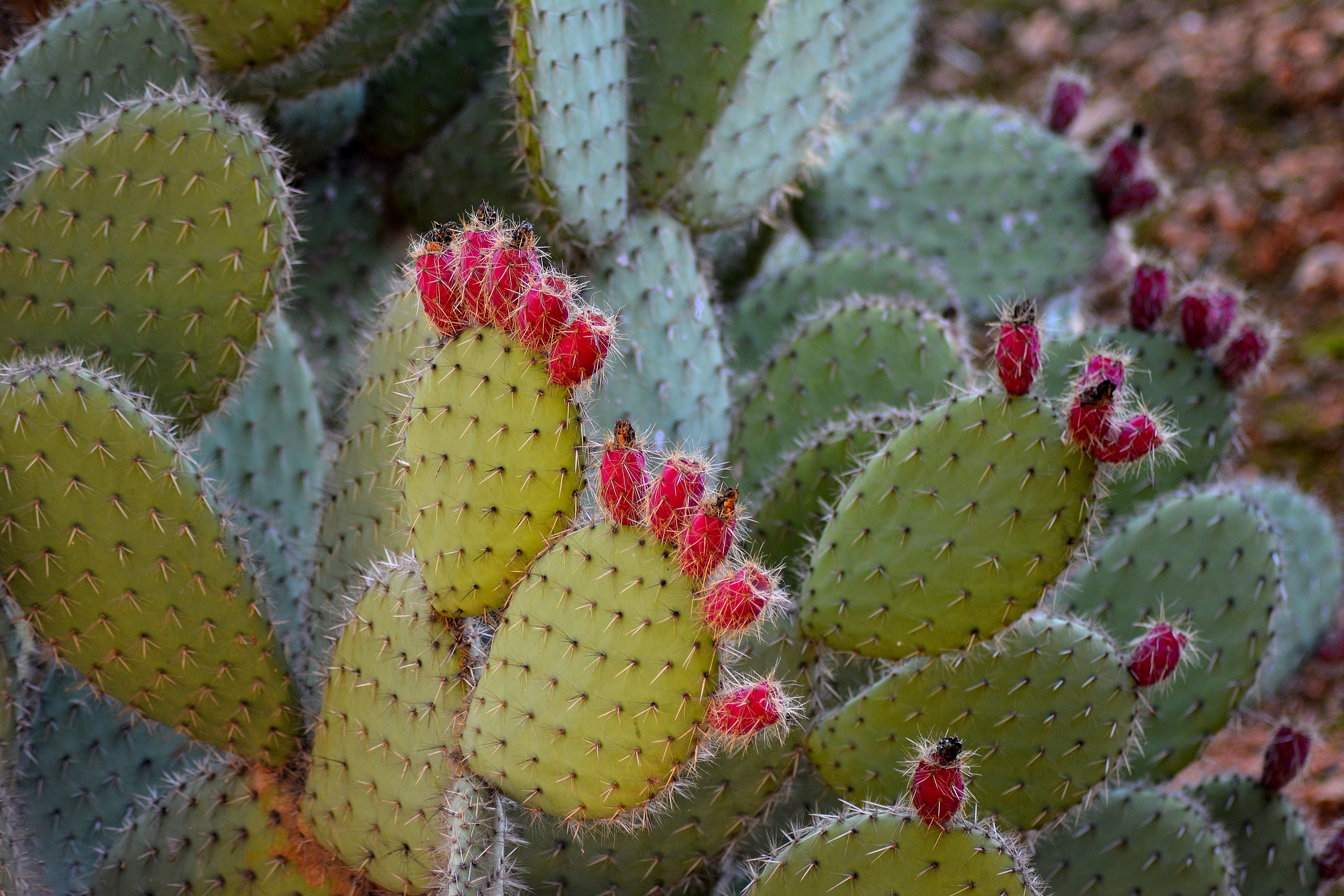Coastal pricklypear
(Opuntia littoralis)

Description
Opuntia littoralis is a species of prickly pear cactus known by the common name coastal pricklypear. It is sometimes called the sprawling prickly pear due to its short stems and habit of growing close to the ground. "Littoral" means "pertaining to the seashore". Opuntia littoralis is native to southern California and Baja California, where it grows in coastal sage scrub and chaparral habitats. The cactus is variable in appearance; there are several varieties and hybrids with similar species are commonly found. Opuntia littoralis generally grows in dense clumps spreading several meters wide and up to a meter-3 feet tall. The branches are made up of oval-shaped flat segments up to 22 centimetres (8.7 in) long. It is covered in clusters of yellowish spines 2 to 4 centimetres (0.79 to 1.57 in) long. The flowers are pale yellow to dull red occurring in May to June. The fruit is purplish red and up to 5 centimetres (2.0 in) long. The fruit is edible. Opuntia, commonly called prickly pear or pear cactus, is a genus of flowering plants in the cactus family Cactaceae. Prickly pears are also known as tuna (fruit), sabra, nopal (paddle, plural nopales) from the Nahuatl word nōpalli for the pads, or nostle, from the Nahuatl word nōchtli for the fruit; or paddle cactus. The genus is named for the Ancient Greek city of Opus, where, according to Theophrastus, an edible plant grew and could be propagated by rooting its leaves. The most common culinary species is the Indian fig opuntia (O. ficus-indica). O. ficus-indica is a large, trunk-forming, segmented cactus that may grow to 5–7 m (16–23 ft) with a crown of over 3 m (10 ft) in diameter and a trunk diameter of 1 m (1 yd). Cladodes (large pads) are green to blue-green, bearing few spines up to 2.5 cm (1 in) or may be spineless. Prickly pears typically grow with flat, rounded cladodes (also called platyclades) containing large, smooth, fixed spines and small, hairlike prickles called glochids that readily adhere to skin or hair, then detach from the plant. The flowers are typically large, axillary, solitary, bisexual, and epiperigynous, with a perianth consisting of distinct, spirally arranged tepals and a hypanthium. The stamens are numerous and in spiral or whorled clusters, and the gynoecium has numerous inferior ovaries per carpel. Placentation is parietal, and the fruit is a berry with arillate seeds.
Taxonomic tree:







